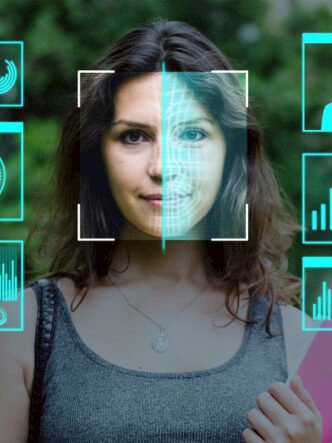The desire of any educator is to have active involvement from learners. Videos provide one of the best ways to make learning active. Videos can include interactive elements, storytelling, and other strategies that engage learners. Active learning with video offers multisensory engagement that suits different learning styles.
When learners try to absorb information by listening passively, they only engage on a surface level. This limits their understanding and retention. Learning is one-dimensional, so it doesn’t fully engage the brain. Passive learning doesn’t cater to different learning styles or give learners any control over the learning process. They can easily become distracted and fail to retain information.

Active learning: What it means and why it matters
Active learning involves learners in the instruction process. It focuses on developing their skills and higher-order thinking instead of just transmitting knowledge. Learning is more meaningful because learners can see how the information applies to their lives. Participating in activities allows them to construct new knowledge and build new skills. With more control over the learning experience, they have more motivation.
- Learners have to engage with the content, reflect on it, and apply what they learn in practical situations. Having to apply knowledge helps to encode new concepts and skills in their memories.
- When you adapt active learning strategies to the needs of individual learners, it offers them a more personalized learning experience. Personalized learning helps to make the learning experience more memorable.
- Active learning may involve interacting with peers. This enhances the communication and collaboration skills of learners.
- Active learning gives instructors the opportunity to assess learner understanding due to consistent feedback.
Using videos helps to promote active learning. Learners may come from all over the globe and videos offer convenient, accessible learning. Choosing the right video hosting platform gives you access to responsive design, fast video playback, and a good viewing experience on any screen size.
The Cincopa platform has a Content Delivery Network (CDN) with a network of servers. All learners can receive quality videos from a server closest to them. They can watch them on their mobile devices without experiencing any loss in quality.
Tools and tactics to engage learners
Learners need to do more than just listen. Interactive e-learning requires them to take action and think about what they’re doing. This involves using collaborative tools and interactive elements such as quizzes, annotations, and calls to action. Dynamic training content helps you to engage online learners and allow them to take the lead in their own learning.
Collaborative tools
Video conferencing – Tools such as video conferencing tools allow learners to connect with mentors or peers. This helps to combat any feelings of detachment or disengagement that may come with online learning.
Video messaging – Recording your webcam and screen allows you to share personalized video messaging. You can add annotations and share your recordings through email or embed them on your website. Video messaging helps you to humanize virtual communication.
Live polls – Get feedback with live polls and other video participation tools.
Live chat – Live chat encourages interactions and discussions.
Interactive quizzes
Interactive quizzes offer learners real-time engagement and provide feedback. Quizzes come in different formats, with one of the most popular being multiple-choice questions. Quizzes can appear throughout video content and at the end of the video to assess progress.
Synchronous and asynchronous learning
A video hosting platform should support live streaming and video-on-demand (VOD). You can host a live stream and convert it to VOD. If learners miss the live stream, they can access it at a later stage.
Live streaming offers immediacy and helps to establish connections, but VOD offers convenience and flexibility. You can build landing pages on your e-learning website with a video playlist or create channels to house your videos for easy access. Learners can fit in learning at times that suit their schedules.
AI-based strategies
- The use of artificial intelligence (AI) promotes adaptive learning. Basing questions on learner performance ensures they aren’t too simple or too difficult to answer.
- AI can suggest relevant learning resources or additional reading based on learner interests and performance.
- AI can also offer ongoing data on the progress of learners. This enables you to identify strengths and address weaknesses.
- AI technologies can help to make videos accessible to a wider learner base, including learners with disabilities. Captions and transcripts help learners who have hearing impairments or aren’t native English speakers.
On the Cincopa platform, you can make use of many interactive elements to make your e-learning videos more engaging. These include quizzes, surveys, and annotations. You can add chapters to make videos easier to digest and link to more content with CTAs.

Storytelling and scenario-based learning through video
Learners must be able to apply what they learn to real-life situations. When learning is relevant and immersive, it enhances motivation and retention.
1. Storytelling
Videos provide one of the best ways to tell stories. A story takes learners on a journey of discovery. They become invested in stories where protagonists face a problem, deal with the challenge, and improve their situation.
- Storytelling can give you a framework to help you organize material and present it in a logical way.
- Storytelling evokes emotion and can create a connection with learners. You need to choose stories and characters that viewers can identify with.
- A story can liven up boring, dry information and make complex information easier to understand.
- A branching storyline requires learners to interact and make choices that affect the outcome of the story. An interactive story using hotspots can highlight a branching conversation between two characters.
2. Scenario-based training activities
Scenarios simulate real life and require learners to engage actively and make decisions. You can use them to practice leadership, communication, and other soft skills in realistic settings.
- A short video conversation between two co-workers could present a realistic interaction. Learners could then have an opportunity to make a choice and get feedback.
- A scenario could simulate an emergency and allow learners to make decisions under pressure without any real-life consequences. Making decisions and seeing the consequences of their choices develops critical thinking skills.
- An interactive compliance training video could use short, realistic stories with decision points and feedback throughout.
- A sexual harassment training video could present viewers with some ‘gray area’ scenarios so they have to decide whether the main character has violated company policies.
Gamification elements that keep learners coming back
Using game-based techniques makes learning more engaging and enjoyable. Learners can solve challenges, proceed through levels, and receive rewards. This helps to enhance their motivation. Applying game elements to non-game problems can be a useful way to increase immersion. Game-based techniques rest on challenges, competition, and reward.
- Points and leaderboards provide tangible achievements. They tap into intrinsic motivators like mastery and a sense of purpose. Learners want to get more points and visibly see their achievements.
- Leaderboards and team challenges offer social learning and collaboration between participants.
- As learners track their progress, they receive instant feedback, which helps them to identify weaknesses and make improvements.
- When learners complete a task and go to a new level, they have more sense of how they are developing as learners.
- Challenge-based gamification can improve learner performance by 89.45% compared to lecture-based education. Active participation and spaced repetition enhance understanding and retention.
- In game-based learning, learners are more engaged because they make choices and decisions that can impact their progression.
- Milestones and rewards encourage ongoing participation and reduce dropout rates.
You can use game-based learning very effectively for different learner types, such as explorers or achievers. For example, explorers may want to create their own learning materials. Achievers may respond to a rewards system for hard work.
Cincopa’s advanced video analytics help you to assess the performance of e-learning videos and observe learner interaction with interactive and game-based videos. You can see what tools and tactics work best to promote active viewing.
Conclusion: Turn learners from viewers into doers
Promoting active learning with video turns learners from viewers into doers. The Cincopa platform offers many tools to help make videos more interactive and analyze learner and video data so you can make improvements. On the Cincopa home page, you can sign up for a free trial and explore the solutions it offers.









